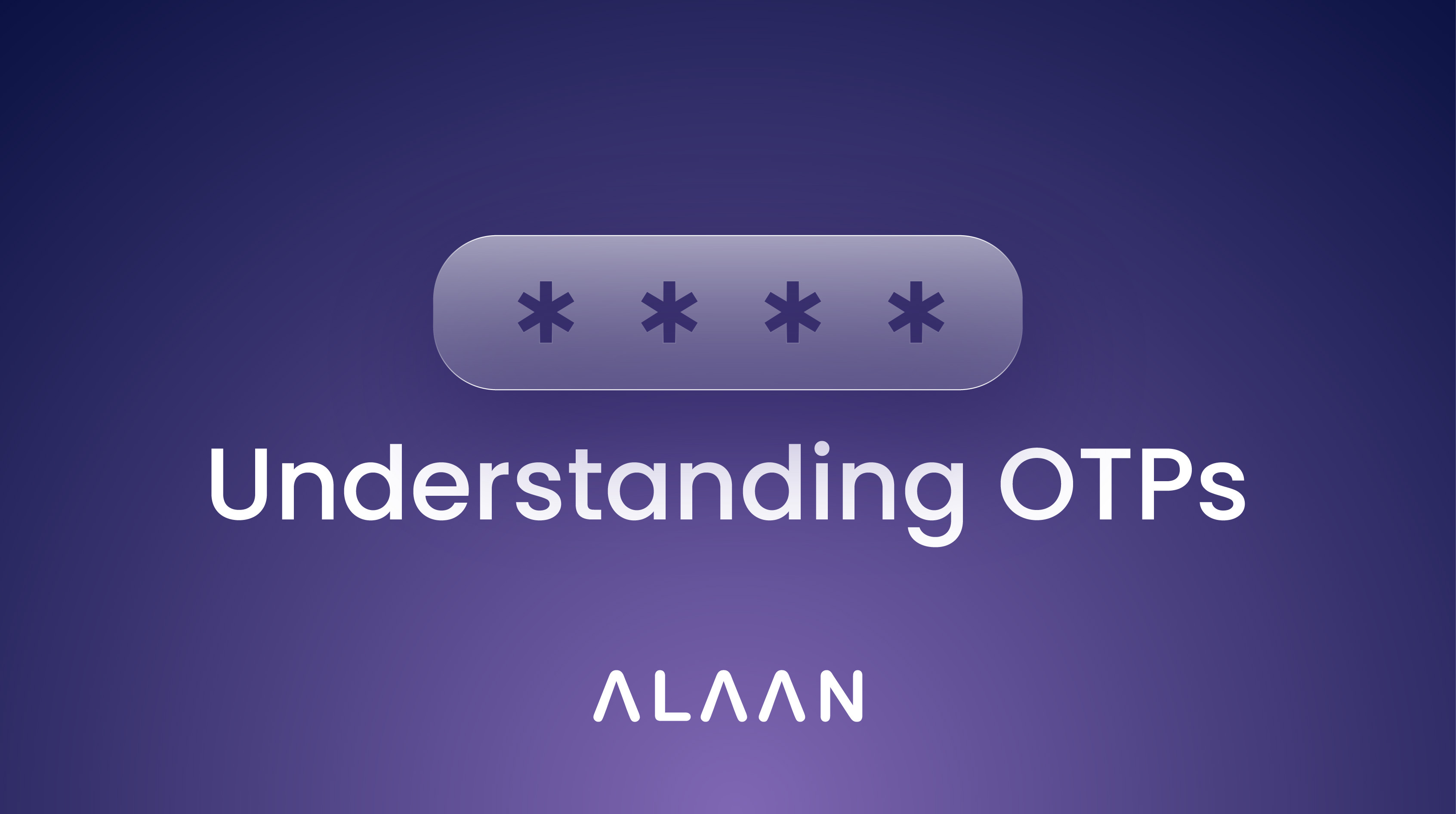Start simplifying your business spend with Alaan 🚀

Learn why OTP is an essential security measure for digital payments

You’re probably here because you encountered a One-Time Password (OTP) during an online transaction using Alaan. Understandably, this might have sparked your curiosity or even a bit of confusion. But don’t worry, we’re here to clear up your concerns and help make your payment process seamless. Let’s unpack what OTPs are, starting with the basics to give you a good understanding.
An OTP is a unique, dynamically generated code that is sent directly to your mobile number or email, designed to validate a single transaction. It is a straightforward method that acts as a second layer of security, confirming your identity beyond the standard passcode. In practical terms, this means that even with your card information in hand, a transaction cannot be completed without this time-sensitive code. It’s an effective way to protect your data, ensuring that only you can authorize payments or access your funds.
The primary goal of an OTP is to combat fraud and enhance the security of online transactions. It's triggered during various scenarios, such as when making a payment online, transferring funds, or logging into a secure platform. The idea is to ensure that the person making the transaction has physical access to the registered device or email account, thereby reducing the risk of unauthorized access.
Here’s where it gets a bit technical. While Alaan provides the infrastructure for safe and secure business payments through corporate cards, the actual trigger for an OTP comes from the merchant's Payment Service Provider (PSP). They, along with the merchant, decide on the necessity of an OTP for authenticating a transaction.
Let’s say you paid for an office lunch using Talabat and it asked you for an OTP. That OTP was triggered by Talabat’s Payment Service Provider, not directly by Alaan. This process ensures that the final layer of transaction verification—like the OTP—comes from those directly managing the transaction.
The decision to require an OTP for specific transactions instead of all transactions is primarily influenced by multiple factors. Here's a breakdown of why only certain transactions might trigger an OTP:
Merchant and PSP policies: Merchants and Payment Service Providers may have specific policies on when to use OTPs, often based on their experiences with fraud prevention.
Transaction type: The need for an OTP can depend on the transaction's nature, such as new payees, large transfers, first-time online purchases, etc.
User convenience: To ensure a smooth user experience, OTPs are typically reserved for transactions where extra security is essential.
Regulatory requirements: Certain regulations may dictate when OTPs are necessary, especially for online transactions requiring strong customer authentication.
So, the next time an OTP pops up during your transaction, you’ll know exactly why it’s there - not to add an extra step to your transactions, but rather to add a layer of protection. It's just a quick check to make sure it's really you making the transaction, keeping things safe and sound.
